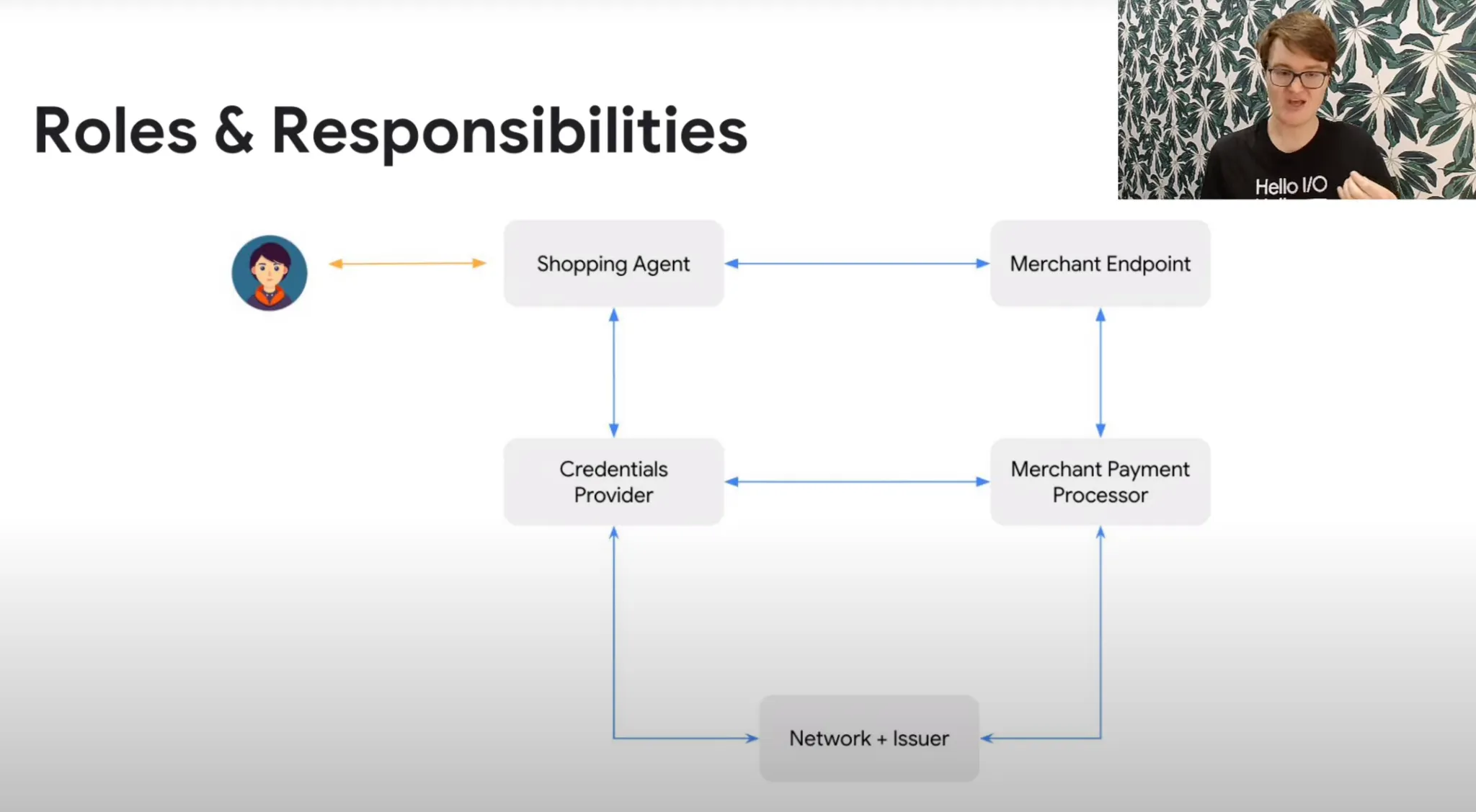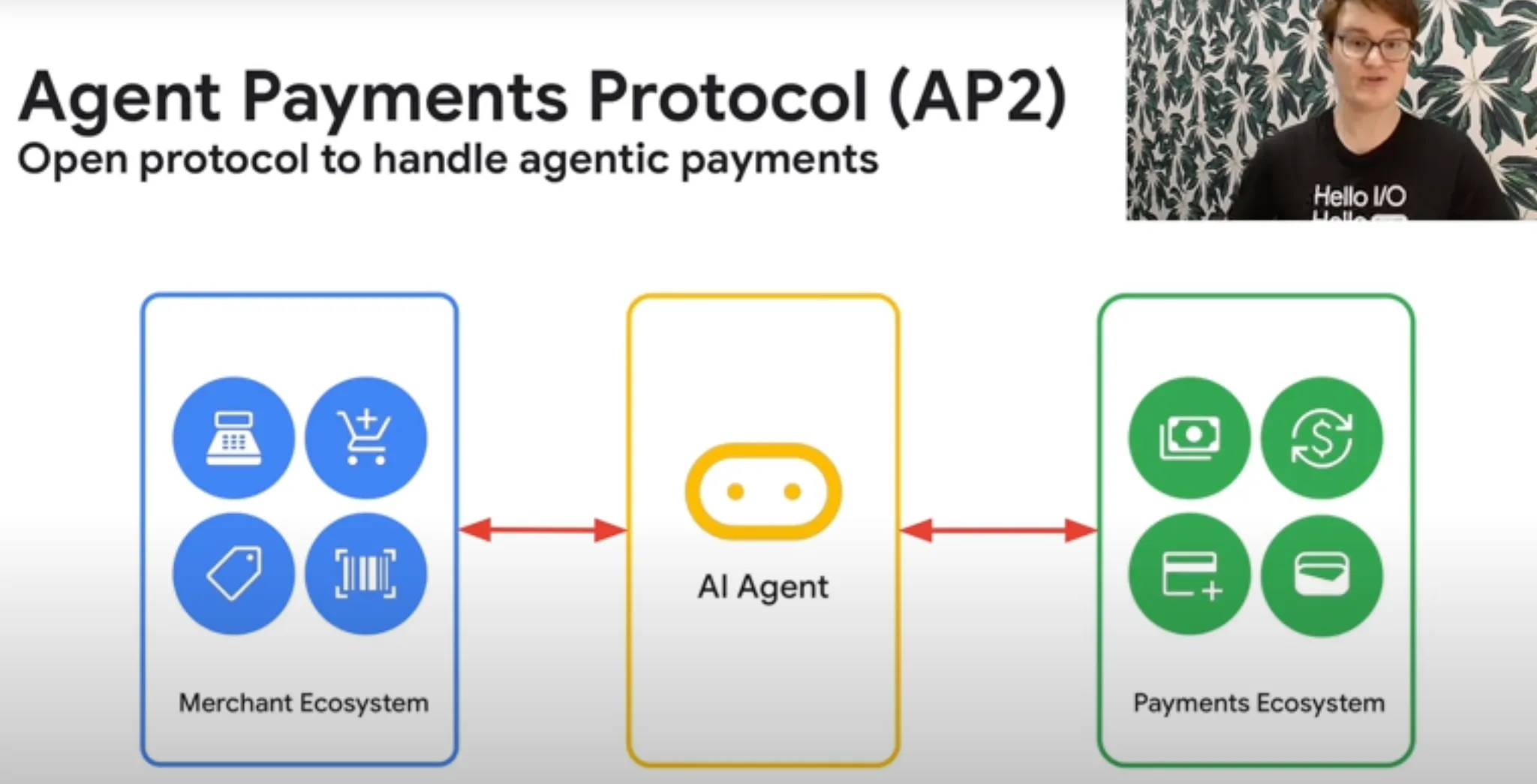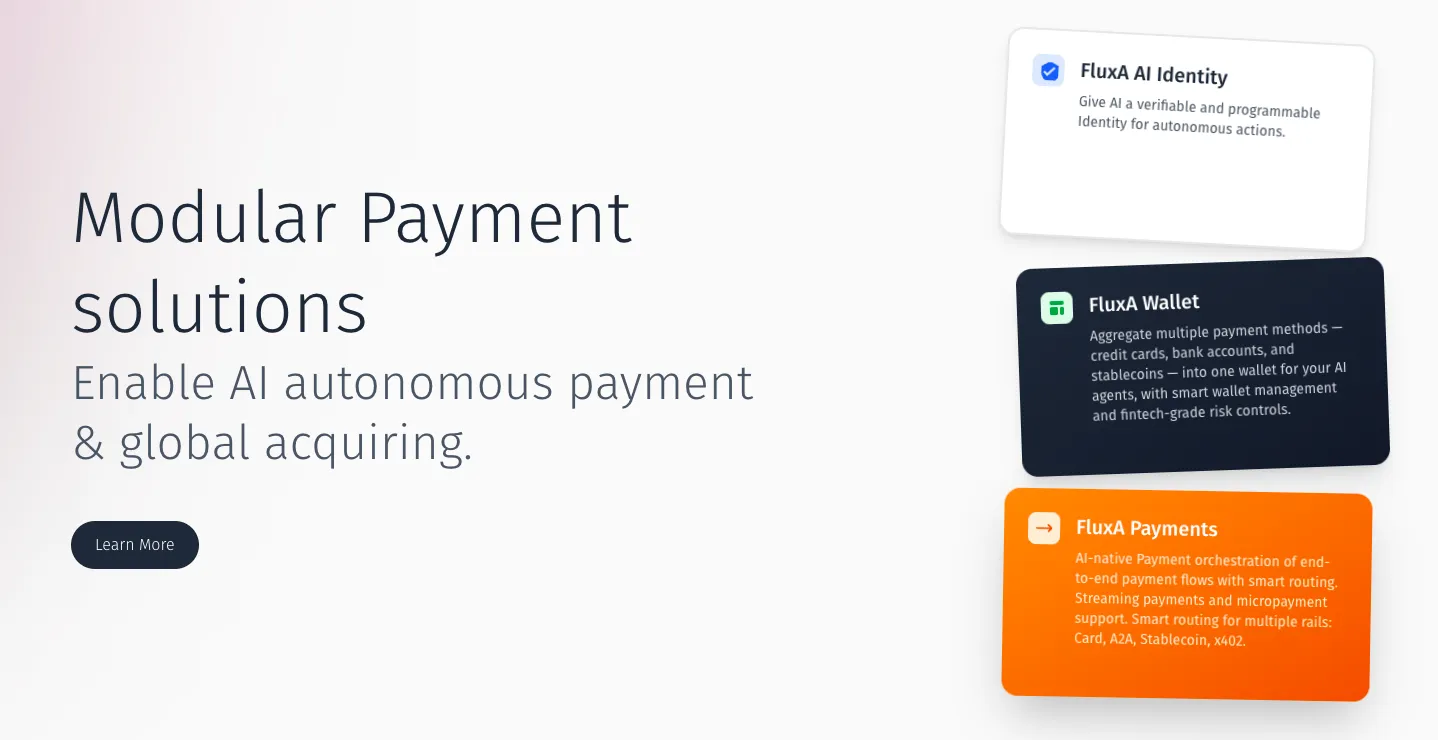The next phase of AI Payment will be jointly defined by standard and execution layer products.
Author: KevinY
TL;DR
The era of AI payments begins: Google, in collaboration with the industry, releases AP2 (Agent Payments Protocol), incorporating AI transactions on behalf of users into a unified, auditable paradigm through Mandate + verifiable credentials.
Coinbase, along with the Ethereum community, promotes x402, making API calls as payments a reality — — native to stablecoins, direct A2A (Agent-to-Agent) connections.
Two tracks converge: fiat and stablecoins progress together, pointing towards the same ultimate goal: a payment semantic layer for Agents.
Startup window: The most needed productized components and security risk control platforms on top of the protocol. FluxA chooses to be among the first batch of mass-producible vehicles.
Opening: Tech giants compete to lay out AI payments, a true turning point emerges
The AI sector is perhaps the most sleepless battlefield right now, with various tech giants engaged in an arms race on the model side, while a brand new battlefield — — AI payments — slowly comes to the forefront. Stripe announces it will launch its own payment L1, Tempo, and Paypal announces investment in Kite.AI. Just a few days ago, Google announced it would launch its own open-source payment protocol, the Agent Payments Protocol (AP2), and collaborate with Coinbase's previously launched X402, integrating X402 into Google's self-developed A2A framework.
As AI gradually develops, the industry's thinking about the boundaries of AI capabilities and commercialization is also entering the next stage. More and more people are beginning to realize that payment capabilities are essential for Agents, as payment is not merely a function; it represents a fundamental shift in traditional e-commerce operations, advertising, distribution, and internet finance when Agentic AI becomes the new "first-class citizen" of the internet, giving rise to a new AI-centric Agentic Commerce.
This article will deeply analyze the latest developments of the two giants in the AI payment field: Google's AP2 and Coinbase's X402, starting from here to analyze the development trends and existing opportunities in the AI payment sector.
01|Google AP2: Incorporating how AI spends money into a regulatory universal language
This week, Google, in collaboration with over 60 payment networks, financial institutions, e-commerce, and blockchain companies, released AP2 (Agent Payments Protocol), attempting to establish a unified standard for the intersection of AI and payments.

Before AI, traditional payments were completed by someone clicking "buy" in the payment backend, and any automated payment behavior not initiated by a human would be deemed "unsafe" by the entire payment system. The payment system has evolved a very mature risk control system to manage this risk. However, in the AI era, this becomes a challenge because if we allow AI to replace humans in initiating transactions, how do we confirm: 1. Did the user truly authorize the AI to make this transaction? 2. Does the AI's request represent the user's true intent? 3. If there is a problem with the transaction, how do we hold the AI accountable?
Google's AP2 addresses this by defining an open protocol standard that provides a universal language for secure and compliant transactions between AI and merchants. This is essentially a dual authorization mechanism established between the user, AI, and merchant:
Intent Mandate: The user provides clear intent regarding what they want to buy, budget limits, and time windows;
Cart Mandate: The agent finds specific products and prices, and requests the user to sign for confirmation again.
Both authorizations are encrypted and signed with verifiable credentials, forming an undeniable evidence chain after the user confirms their signature. For merchants and clearing networks, this means that the payment request they receive is not from an unidentifiable robot, but from a user-authorized, verifiable "transaction contract." Merchants and clearing networks can confidently recognize the legality of this transaction through the "transaction contract" defined by Google.
AP2 does not aim to overhaul networks like Visa/ACH/stablecoins and blockchain; rather, it adds a layer of trust semantic layer on top of them, indicating who is spending money, why they are spending, and ensuring accountability. It attempts to adapt and solve the problem of confirming AI payment intentions across different clearing networks, such as stablecoins and fiat currencies. In traditional payment scenarios, this is initiated by each of us manually clicking the "buy" button, while in the "dark forest" of the AI and stablecoin era, we need to use cryptography and process constraints to bring every AI's behavior into order, ensuring that AI does not misuse its power to harm users' funds.
Although the entire design and development of AP2 is still in its early stages, we can clearly see Google's thoughts and focus on AI payments, which is to alleviate concerns among all participants in the agent payment chain regarding the uncontrollability and unverifiability of agent behavior. This is an essential part of AI completing payment actions:
For consumers: Defining the boundaries of AI payment behavior through authorization. Budget, categories, time windows, and exception rules are all solidified in the authorization; confirming the agent's behavior authorization scope before payment, allowing for retrospective accountability to what was authorized at the time, achieving preemptive prevention of overreach and post-event appeal.
For merchants and payment networks: Upgrading the confirmation of whether it is the user's true intent from verbal/interface confirmation to an encrypted verifiable intent credential; chargebacks and dispute resolution have linked evidence, reducing gray losses and compliance uncertainties.
For the ecosystem: Establishing a common language for AI participation in payments, facilitating multi-party collaborative innovation (identity, risk control, clearing and settlement, factoring, etc.) to maintain consistency in defining the same issues.
For enterprise IT/compliance: Transitioning processes like automated procurement, subscription scaling, and bill payments in the AI era from policy documents + manual review to protocol-level policy execution; leaving real-time traces to lay a solid foundation for future penetrating regulation.
02|x402: Binding payments with services, building a new machine economy using stablecoins
If Google is more focused on the authorization and security issues of AI payments, then Coinbase, which is inherently closer to stablecoins and blockchain, directly reaches for AI's transaction behavior and settlement itself. Through the x402 protocol promoted by the Ethereum Foundation, Coinbase aims to shape stablecoins and blockchain into the native currency and payment primitives of AI payments, coupling AI's payment behavior with "consumption" behavior.

x402 derives its name from HTTP 402, which is actually a status code in the HTTP protocol indicating "payment is required to use this resource." Before the era of AI and stablecoins, this status had almost never been standardized for use in history. However, the rise of AI in recent years has allowed developers to see its potential, as access calls to web pages and APIs increasingly come from AI rather than real people. Shouldn't AI also pay for their access?
The idea behind x402 is to start from the payment link, allowing API calls to be natively coupled with payments:
When an AI agent calls a service, x402 will respond to the AI agent with a payment "bill" based on the payment information previously defined by the service provider. The AI agent can then use stablecoins like USDC to complete the settlement for the service directly on-chain based on this "bill," and the service provider will immediately release the service to the AI.
Although it is just a simple protocol rather than a complete product, x402 applies the real-time settlement and highly programmable characteristics of stablecoins to the AI payment scenario, depicting the possible appearance and potential of AI payments in the stablecoin era:
For AI agents, the existence of x402 allows the integration of service calls and payments, enabling AI to bypass the human workflow of "binding credit card — initiating payment — waiting for service activation" and truly achieve pay-as-you-go. Moreover, unlike the relatively low-frequency payment needs of humans, the parallel processing capabilities of AI agents allow their payment frequency to far exceed that of humans. x402 makes it more suitable for AI agents, enabling them to complete more granular automated micropayments and flow payments without pre-setting various accounts and API keys, automatically negotiating prices when encountering x402 challenges.
Get FluxA’s stories in your inbox
Join Medium for free to get updates from this writer.
For providers of AI services, x402 brings the capability of "access equals quote" down to the protocol level: In the future, x402 ecosystem developers can finely create micropayments for pages, APIs, and data shards, charging based on requests, tokens, duration, and other complex payment models; simultaneously leveraging stablecoins for instant, cross-border, low-fee settlements, easily achieving transaction reconciliation even with extremely high transaction volumes.
03|Two tracks, pointing towards the same ultimate goal
If AP2 is the AI extension of the traditional payment system, then x402 resembles the nascent AI-native payment form in the stablecoin era. The convergence of the two represents the foundation of tech giants working together to weave the full chain of AI Payment, presenting a dual-track parallel scenario: fiat payments and crypto payments are both evolving towards being callable by Agents.
AP2: Incorporating real-world regulation, risk control, and consumer protection into Agent transactions;
x402: Integrating Web3's instant settlement and programmability into Agent transactions.
The conclusion is evident: The next phase of AI Payment will not be a choice between two options, but rather a dual-track parallel and interconnected approach.
Users and merchants gain compliance and trust under AP2;
Computing power/data/microservices gain speed and programmability under x402;
Upper-layer products need unified abstraction to seamlessly orchestrate the two tracks for Agent use.
04|Entrepreneurial Track: The Most Needed Executable Layer Products Above the Protocol
Tech giants often start by defining standards to build ecosystems and influence, but standards like X402 and AP2 are still far from usable AI payment products in real environments. The focus should be on creating usable and scalable productized components above the protocol. This is the direction that entrepreneurs in this track should pursue.

Google has summarized the various roles and responsibilities involved in the Agent payment process. Protocols like AP2 are more about coordinating multiple parties in the payment chain to trust requests from AI Agents through verifiable credentials. We can see that AP2 is not the execution layer of payments; Google has chosen to open the execution layer to other payment participants to build together.
Credentials Provider, Merchant Payment Processor, and Network/Issuer constitute the three major roles in the payment execution layer. In the era of Agent payments, whether the payment execution layer can give rise to the next trillion-dollar market and players is a question that AI innovation pioneers are seeking to answer.
05|FluxA: Building Mass-Produced Vehicles Above the Protocol
FluxA is an AI-native payment execution layer, founded by former executives from Alibaba and Ant Group, and is actively joining the Agent payment race.
FluxA aims to create a payment primitive for the Agent economy, abstracting identity, wallets, and payments into modular primitives, allowing developers to assemble their own Agentic economic services using components provided by FluxA.

The core products of FluxA cover four essential aspects of AI Agent payments: identity, wallet, acquiring, and payment channels.
AI Wallet: Aggregates all AI-accessible payment methods (bank cards, e-wallets, stablecoin wallets, etc.) for AI Agents, providing a unified payment entry. The security and risk control module is a key focus of this AI wallet, ensuring that AI Agents conduct proxy consumption under the user's intent.
AI Identity: The AI wallet can naturally provide a trusted AI identity ID for AI Agents, which includes not only user information authentication but also authentication of the AI Agent's execution steps. Based on the AI identity provided by FluxA, merchants and downstream payment participants can further enhance risk control levels and avoid risk exposures caused by providing programmable interfaces to AI Agents.
AI Payment: Provides services for merchants to collect payments from AI Agents. The core idea of FluxA AI Payment is to aggregate acquiring and multiple payment channels available to AI Agents, so merchants do not have to worry about AI Agents being unable to complete payments. It also integrates industry protocols like AP2 and x402 to offer diverse AI-native payment methods.
Stablecoin Rail: Stablecoins are in the early stages of mainstream adoption, and there are many details in consumer wallets and merchant acceptance that need improvement. FluxA will build a user-friendly stablecoin channel focused on mainstream compliance and low-threshold adoption, specifically serving AI payments.
If Google AP2 and Coinbase x402 provide the highways, FluxA aims to be the first batch of mass-produced vehicles on those highways:
Integrate with protocols like AP2 and x402 → Ensure compatibility with global payment standards.
Provide SDK/API → Allow developers to quickly enable AI payment capabilities without needing to study underlying protocols.
Target application scenarios → Whether for B-end SaaS automated procurement or C-end Agent e-commerce shopping, FluxA can serve as the payment execution layer.
In the early stages of the innovation track, entrepreneurs often take the first exploratory steps faster than the giants. Open protocols have just begun, and truly usable products in the market are still scarce; enterprises hope to quickly integrate AI into payments while ensuring the process is fast and orderly, creating a pressing demand for compliant and auditable landing platforms. Meanwhile, developers are reluctant to exhaust themselves connecting with dozens of gateways or wallets; they need a one-stop abstraction layer that makes payment capabilities as simple and direct as calling an API.
FluxA will not create its own protocols but will deeply align with and closely follow the evolution of AP2 and x402, prioritizing compatibility with mainstream payment service providers and wallet ecosystems. At the same time, FluxA's value lies in filling the gaps, transforming protocols into truly usable products, turning standards into actionable business capabilities, and internalizing security requirements as default configurations. In this way, the giants are responsible for setting rules and building highways, while entrepreneurs are the first to launch mass-producible vehicles on these highways.
Payments themselves constitute a vast ecosystem, and the relationship between startups and giants is not one of opposition but rather one of complementarity:
FluxA does not create protocols but deeply aligns with them. It closely follows the evolution of AP2/x402 and prioritizes compatibility with mainstream payment service providers and wallet ecosystems;
FluxA's value lies in occupying an ecological niche: transforming protocols into products, turning standards into operational capabilities, and making security requirements default and built-in.
Conclusion: From Dialogue to Transaction, the AI Economy Truly Starts
As Google and Coinbase exert their efforts on their respective tracks to promote the establishment of protocol standards, what the market needs is no longer new slogans but the courage to implement them first. AP2 provides guarantees for compliance and trust, x402 opens up spaces for instant settlement and programmability, while FluxA transforms these abstract standards and protocols into truly callable payment primitives and usable product components.
The next phase of AI Payment will be jointly defined by standard and execution layer products. Agents not only need to be granted permissions but must also be verifiable and accountable; the payment process is not just about executing a transfer but achieving orchestration, observation, and expansion; for developers, the ideal state is to quickly integrate and launch AI payment capabilities within days.
The turning point has arrived. FluxA hopes to work with ecosystem partners to advance the Agent economy from papers and demonstrations to a reliable, usable, and scalable reality.
免责声明:本文章仅代表作者个人观点,不代表本平台的立场和观点。本文章仅供信息分享,不构成对任何人的任何投资建议。用户与作者之间的任何争议,与本平台无关。如网页中刊载的文章或图片涉及侵权,请提供相关的权利证明和身份证明发送邮件到support@aicoin.com,本平台相关工作人员将会进行核查。




